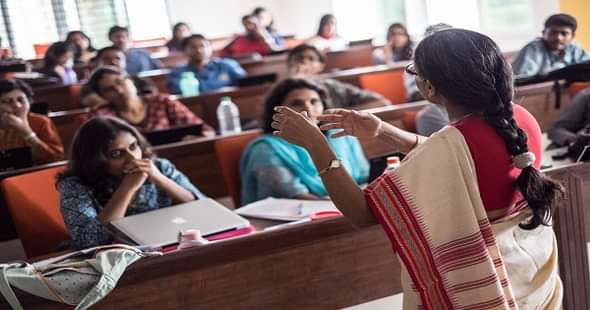- South Indian states spend the most on higher education with 43% and 38% in rural & urban parts respectively.
- In urban areas, North-East India spends the lowest with 23% while in the rural parts, Central India spends the lowest with only 16% of their total expenses.

Education may be priceless, but those from the urban and rural parts of southern Indian states spend the most to finance the dream of their children t pursue higher education.
According to the recent study on 'Household Expenditure on Higher Education in India: What do we know and what does recent data have to say', the higher education on average accounts for 15.3 percent of the annual household expense in rural areas and 18.4 percent in urban areas. While in the southern part of India, the corresponding figures are 43 percent and 38 percent respectively.
Also Read: International Conference by IIT Kharagpur on “India: The Global Destination for Higher Education"
In exact terms, the annual expense of southern states from the urban area on average on higher education is Rs 49,690 followed by the states of West India with the number Rs 45,436 per annum. While in the rural parts, the southern Indian families spend on average Rs. 36,063 a year which makes it 43 percent of their total household expense followed by the northern Indian states with the average expense of Rs 25,143 annually.
Professor of Indira Gandhi Institute of Development Research in Mumbai, S Chandrasekhar and one of the authors of the study revealed that the higher education is really expensive for an average citizen as they spend one-third of their total consumption expenditure with an expectation of better return on the investment made. Soham Sahoo of the University of Goettingen from Germany and P Geetha Rani of the Central University of Tamil Nadu are the other co-authors of the paper.
The families from the urban areas in North- East India spend the lowest on highest education with 23 percent of their total household expenditure i.e Rs 29,249 annually while in the rural part, Central India spends the lowest with only 16 percent of the household expense i.e Rs 11,873 per year.
The study states that with the uncertainty in the employment prospect, the opportunity cost to seek higher education increases for the poorer households, this explains the inconsistency in the demand for higher education according to the wealth scale. It also discloses that the average income of rural India is not enough to fund quality higher education
The National Sample Survey Organisation (NSSO) survey of consumption expenditure which is conducted once in the period of five years, estimates the expenditure of the household as a whole pursuing higher education and not for each member.
Also Read: HRD Ministry Orders UGC to Again Inspect 44 ‘Unworthy’ Universities
As per the Socio-Economic and Caste Census 2011, the maximum income earned by any family member is less than Rs 5,000 per month in roughly 73 percent of the households. Also, on average the rural family spends 27 percent of its total household expense if any family member wishes to seek higher education.


 Follow us
Follow us













